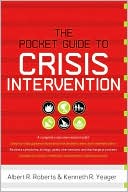Category Books
- Fiction Books & Literature
- Graphic Novels
- Horror
- Mystery & Crime
- Poetry
- Romance Books
- Science Fiction & Fantasy
- Thrillers
- Westerns
- Ages 0-2
- Ages 3-5
- Ages 6-8
- Ages 9-12
- Teens
- Children's Books
- African Americans
- Antiques & Collectibles
- Art, Architecture & Photography
- Bibles & Bible Studies
- Biography
- Business Books
- Christianity
- Computer Books & Technology Books
- Cookbooks, Food & Wine
- Crafts & Hobbies Books
- Education & Teaching
- Engineering
- Entertainment
- Foreign Languages
- Game Books
- Gay & Lesbian
- Health Books, Diet & Fitness Books
- History
- Home & Garden
- Humor Books
- Judaism & Judaica
- Law
- Medical Books
- New Age & Spirituality
- Nonfiction
- Parenting & Family
- Pets
- Philosophy
- Political Books & Current Events Books
- Psychology & Psychotherapy
- Reference
- Religion Books
- Science & Nature
- Self Improvement
- Sex & Relationships
- Social Sciences
- Sports & Adventure
- Study Guides & Test Prep
- Travel
- True Crime
- Weddings
- Women's Studies
Pocket Guide to Crisis Intervention » (New Edition)

Authors: Albert R Roberts, Kenneth R. Yeager
ISBN-13: 9780195382907, ISBN-10: 0195382900
Format: Paperback
Publisher: Oxford University Press, USA
Date Published: March 2009
Edition: New Edition
Author Biography: Albert R Roberts
The late Albert R. Roberts was Professor Criminal Justice, School of Arts and Sciences, Rutgers University Livingston College Campus and Editor-in-Chief, Brief Treatment and Crisis Intervention. Dr. Roberts was a member of The Board of Scientific and Professional Advisors, and a Board Certified Expert in Traumatic Stress for The American Academy of Experts in Traumatic Stress.
Kenneth R. Yeager is an Associate Professor of Psychiatry & Social Work at The Ohio State University, Director of Quality Assurance at The Ohio State University Medical Center, and Clinical Director of Outpatient Psychiatry Services of OSU Harding Hospital.
Book Synopsis
Crisis workers make split-second decisions every day that affect the mental health and well-being of individuals, families, and entire communities. They support and guide people through health diagnoses, bankruptcies, sexual assaults, deaths of loved ones, suicide attempts, and natural or man-made disasters from the front lines. While professions vary from mental health professionals, emergency responders, educators, business managers or volunteers such as suicide hotline workers, all have a common and urgent need for a rapid reference that covers every type of traumatic event they may be asked to respond to in the course of an unpredictable and highly stressful day.
The Pocket Guide to Crisis Intervention is a complete crisis toolkit, a trusted resource to consult on the fly, packed with easy-to-follow, step-by-step evidence-based protocols for responding effectively to a broad range of traumatic events. Checklists, bullets, and boxes highlight symptoms & warning signs and provide action plans, do's & don'ts, and screening & assessment questions. The open layout and two-color design make this pocket guide as visually appealing as it practical, ensuring at-a-glance lookup of the essentials of managing the most common types of crisis.
More than just a collection of action lists, though, this pocket guide explains theories and models in clear, jargon-free language, offering tips for clinical practice, treatment planning, referrals, and coordinating services as needed. It can be used as a field manual for seasoned professionals or as a training tool for new recruits and practitioners seeking to sharpen their skills.
Table of Contents
1. Definition and Nature of Crisis
2. Public vs. Private Crisis
3. Events that Precipitate a Crisis
4. Twelve Characteristics and Indicators of a Crisis-Prone Person
5. Types of Crises
6. Burgess and Roberts' Stress-Crisis-Trauma Continuum
7. Psychophysiological Reactions to a Crisis
8. Stress Symptomatology and the General Adaptation Syndrome
9. Common Signs, Symptoms, and Psychological Responses to Crisis (Emotional, Cognitive, and Behavioral)
10. Roberts' Seven Stage Crisis Intervention Model (R-SSCIM)
11. The Crisis Management Plan
12. Dos and Don'ts for Crisis Hotline Workers
13. Steps for Handling Difficult or Hostile Callers to a Hotline
14. Suicide Risk Assessment Protocol and Warning Signs
15. Crisis Intervention with Families
16. Crisis Intervention with Substance Abusers
17. Crisis Intervention with Accident Survivors
18. Crisis Intervention with Violent Crime Victims
19. Crisis Intervention with Abused Children
20. Crisis Intervention with Battered Women
21. Crisis Intervention with Sexual Assault Victims
22. Crisis Intervention with Mental Illness: Determining Safety Needs
23. Crisis Intervention after the Death of a Loved One
24. Crisis Intervention with Children in the Aftermath of School Violence
25. Crisis Intervention after Natural Disasters-Hurricanes, Earthquakes, Floods
26. Crisis Intervention after Terrorist Bombings in Planes, Railroads, or Buildings
27. Crisis Intervention after Bio-terrorism
28. Crisis Intervention with Homicide Survivors
29. The 10 Stages of Acute Traumatic Stress Management (ATSM)
30. Critical Incident Stress Debriefing Model
31. Multi-Component Critical Incident Stress Management (CISM)
32. Signs and Symptoms of Clinician Stress and Burnout
33. Stress Reduction and Coping Skills for Clinicians Working in Crisis and Disaster Relief Positions
Subjects
 Medicine
Medicine  Clinical Medicine
Clinical MedicineNonfiction
 Psychology
Psychology  Clinical Psychology
Clinical PsychologyNonfiction
 Psychology
Psychology  Psychology - Theory, History & Research
Psychology - Theory, History & ResearchPsychology & Psychotherapy
 Clinical Psychology
Clinical Psychology  Crisis Intervention - Psychology
Crisis Intervention - PsychologyPsychology & Psychotherapy
 Clinical Psychology
Clinical Psychology  Mental Health Services & Personnel
Mental Health Services & PersonnelPsychology & Psychotherapy
 Clinical Psychology
Clinical Psychology  Psychotherapy
PsychotherapyPsychology & Psychotherapy
 Psychological Disorders
Psychological Disorders  Crisis Intervention - Psychology
Crisis Intervention - PsychologyPsychology & Psychotherapy
 Psychological Disorders
Psychological Disorders  Mental Health Services & Personnel
Mental Health Services & PersonnelPsychology & Psychotherapy
 Psychological Disorders
Psychological Disorders  Psychotherapy
PsychotherapyPsychology & Psychotherapy
 Psychology - Theory, History & Research
Psychology - Theory, History & Research  Reference - Psychology
Reference - PsychologyMedical Books
 Psychology & Psychotherapy
Psychology & Psychotherapy  Clinical Psychology
Clinical PsychologyMedical Books
 Psychology & Psychotherapy
Psychology & Psychotherapy  Psychological Disorders
Psychological DisordersMedical Books
 Psychology & Psychotherapy
Psychology & Psychotherapy  Psychology - Theory, History & Research
Psychology - Theory, History & ResearchNonfiction
 Medicine
Medicine  Medicine
Medicine
